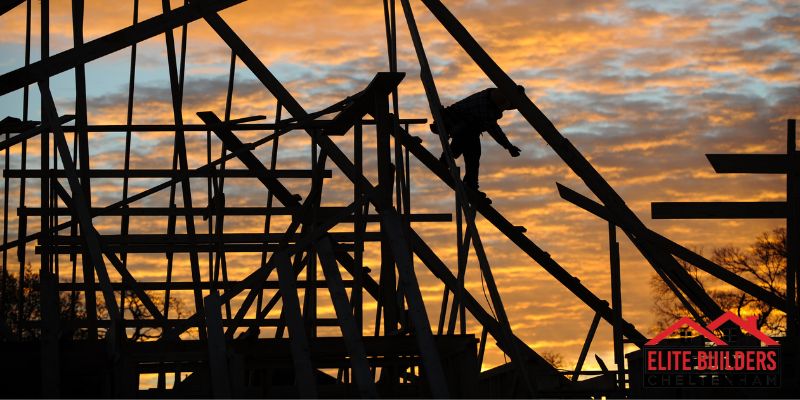Did you know that 80% of new builds in the UK retained their value or even increased it in 2023?
If you’re considering investing in a new build property, it’s crucial to understand its long-term value potential. In this piece, we’ll examine market trends, compare appreciation rates, and discuss the pros and cons of new builds.
Elite Builders will also provide tips on how to maximize the value of your new build investment. Stay ahead of the game and make informed decisions in the ever-evolving real estate market.
Market trends and demand for new builds in the UK
Yes, I am aware of the current market trends and demand for new builds in the UK. In today’s rapidly changing real estate landscape, it is important to stay informed about the latest developments.
The demand for new builds in the UK has been steadily increasing over the past few years, driven by a combination of factors. Firstly, the growing population and limited housing supply have created a strong demand for new homes.
Secondly, the government’s initiatives to promote affordable housing and assist first-time buyers have further fueled the demand.
Additionally, the desire for energy-efficient and environmentally-friendly homes has also contributed to the increased demand for new builds.
These market trends indicate a promising future for the new build sector, presenting lucrative opportunities for both developers and investors alike.
Factors that affect the long-term value of newly constructed buildings
Have you considered the factors that can influence the long-term value of new builds in the UK?
When it comes to determining the long-term value of new builds, several key factors come into play.
Firstly, location plays a crucial role. Properties in desirable areas with good transport links, amenities, and schools tend to hold their value better over time.
The quality of construction is vital as well. Well-built new builds that showcase innovative design features and use high-quality materials tend to retain their value better.
Energy efficiency is becoming increasingly important. With rising energy costs and a growing focus on sustainability, new builds with energy-efficient features like solar panels or efficient insulation are likely to see their value increase in the long run.
Lastly, market demand is a significant factor. Understanding the current and future demand for new builds in a particular area can help determine their long-term value.
Comparing Appreciation Rates: New Builds Vs. Older Properties
When comparing the rate at which properties increase in value, you will find that new constructions tend to maintain their value better than older properties in the United Kingdom. This is supported by data-driven analysis of the market.
Over the past decade, new constructions have consistently shown a higher rate of appreciation compared to older properties. This can be attributed to several factors.
Firstly, new constructions often come with modern features and amenities that are in high demand among buyers. These features include energy-efficient technologies, open-plan layouts, and smart home systems.
Additionally, new constructions are often located in desirable areas with good transportation links and access to amenities. This combination of modern features and prime locations makes new constructions more attractive to buyers, leading to higher demand and increased appreciation rates.
In contrast, older properties may require renovations and updates to meet modern standards, which can impact their value. Furthermore, older properties may be located in less desirable areas, affecting their market appeal.
The advantages and disadvantages of investing in new construction projects.
Investing in new builds has its advantages and disadvantages.
On one hand, new builds offer the allure of modernity and innovation. They often come equipped with the latest technology and energy-efficient features, appealing to a market that desires sustainability.
Additionally, new builds tend to have lower maintenance costs, as everything is brand new and under warranty. They also offer the opportunity to customise the property to your liking, adding value and personalisation.
On the other hand, new builds can be more expensive than older properties, especially in prime locations. There’s also the risk of delays in construction or poor workmanship, which can lead to additional costs and frustration.
Furthermore, the market for new builds can be highly competitive, with limited availability and high demand. It’s important to carefully weigh these pros and cons before making an investment decision.
Tips for Maximising the Value of Your New Build Property
To ensure you get the most out of your new build property, consider implementing a few key strategies to maximise its value. Here are three tips to help you achieve this:
Invest in energy-efficient features: Energy efficiency is a growing trend in the property market, with buyers increasingly looking for homes that can help reduce their carbon footprint and lower utility bills. Installing energy-efficient appliances, insulation, and solar panels can significantly increase the value of your new build property.
Focus on curb appeal: First impressions matter, so make sure the exterior of your property is well-maintained and visually appealing. Enhance the landscaping, repaint the front door, and consider adding outdoor lighting to create an inviting atmosphere.
Upgrade the kitchen and bathrooms: These are the most important rooms in any home, and potential buyers place great importance on their condition. Invest in high-quality fixtures, modern appliances, and stylish finishes to make your new build property stand out in the market.
Frequently Asked Questions
Yes, there are government schemes available to support the purchase of new build properties in the UK.
There are several government schemes available to support the purchase of new build properties in the UK. These schemes aim to make homeownership more accessible and affordable for individuals.
For instance, the Help to Buy scheme provides an equity loan to buyers, allowing them to secure a new build property with a smaller deposit.
The Shared Ownership scheme offers the opportunity to purchase a share of a new build property and pay rent on the remaining portion.
These schemes contribute to the overall market-focused approach of the government, promoting innovation in the housing sector.
The location of a new build property can have a significant impact on its long-term value.
When considering the long-term value of a new build property, the location plays a crucial role. A prime location with amenities such as schools, transportation, and shopping centres tends to increase the value over time.
Areas experiencing growth, such as those with new infrastructure projects or upcoming developments, often attract buyers and boost property values.
Additionally, proximity to desirable attractions like parks, beaches, or cultural landmarks can also positively impact a property’s long-term value.
Therefore, the location of a new build property is a key factor to consider when assessing its potential for retaining value.
What are the potential risks or drawbacks of investing in a new build property?
Potential risks or disadvantages associated with investing in a newly constructed property include the potential for construction delays and increased maintenance expenses.
Newly built properties often come with warranties and modern amenities, but they may also encounter unforeseen problems or fluctuations in market demand.
Before making an investment decision, it is crucial to carefully evaluate the location, the developer’s reputation, and the overall property market.
Are there any specific maintenance requirements for new build properties that could impact their value?
Specific maintenance requirements for new build properties can have a significant impact on their value. Regular inspections and upkeep are essential to preserve the property’s condition and prevent any potential issues from escalating.
Maintenance tasks such as checking for water leaks, maintaining the heating and ventilation systems, and ensuring the structural integrity are crucial. Neglecting these requirements can lead to a decline in value over time and increase the likelihood of costly repairs down the line.
Staying proactive in maintaining your new build property will help safeguard its value and ensure its long-term appeal in the market.
How do the energy efficiency features of new build properties contribute to their long-term value?
The energy efficiency characteristics of newly constructed properties have a substantial impact on improving their value over time. These characteristics, such as solar panels, double-glazed windows, and insulation, effectively decrease energy usage and lead to reduced utility expenses.
In the United Kingdom, where energy expenses are consistently rising, buyers are increasingly giving importance to energy-efficient homes. As a result, newly constructed properties with high energy efficiency ratings demand higher prices and possess better resale value.
Allocating resources to energy-efficient features not only saves money in the long term but also boosts the attractiveness and value of the property.
Thanks for reading our post, feel free to check out our other services:











